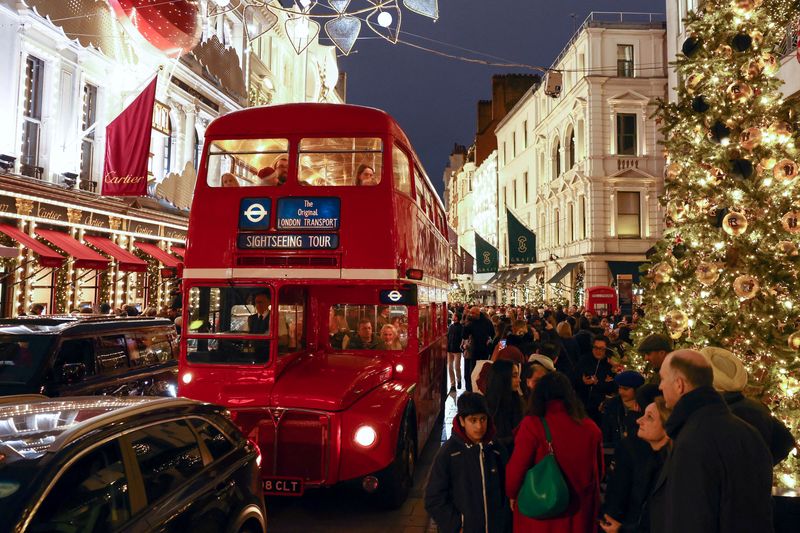LONDON (Reuters) - British shopper numbers at stores on Boxing Day rose from a year earlier, especially in London, research data showed on Wednesday, marking a strong start to the post-Christmas bargain-hunting spree.
Research group MRI Software said footfall rose 4% across all UK retail destinations on Dec. 26.
Known in Britain as Boxing Day, the date that traditionally launches high-street sales was in the Victorian era the time when the rich would donate leftover food and goods from Christmas Day festivities to the poor.
Stores in central London saw the biggest jump, with MRI - formerly called Springboard - estimating a 10.6% jump in footfall, probably because of an inflow of tourists for the holidays.
Overall shopper numbers were still weaker compared to pre-pandemic figures, with footfall 14.9% lower than 2019 levels, reflecting the hit to household spending from inflation and the shift towards online shopping.
"Many people may be tightening their purse strings given the cost of living status, or may still be spending time with their families on Boxing Day and not be heading out to stores and destinations until later in the week," MRI Marketing and Insights Director Jenni Matthews said.
For all retail sales, including online and in-store, an analysis by GlobalData for internet marketing service VoucherCodes estimated a 2.9% decline this Boxing Day at 3.68 billion pounds ($4.69 billion).
For the entire Dec. 25-31 week, the report predicted a 3.8% fall.
But sales in the run-up to Christmas increased from last year. Mastercard (NYSE:MA) data, which measures both in-store and online retail sales, showed a 2.6% rise in sales value year-on-year for the Nov. 1-Dec. 24 period.

"UK consumer spend volume during the period peaked during Black Friday, as savvy shoppers looked out for promotions to make the most of their spending and navigate inflation," Mastercard said.
($1 = 0.7843 pounds)